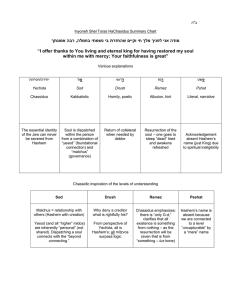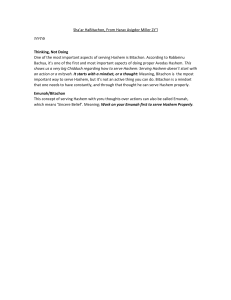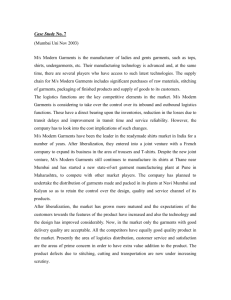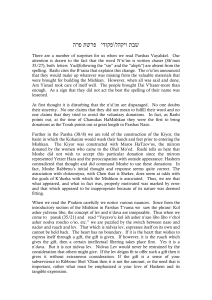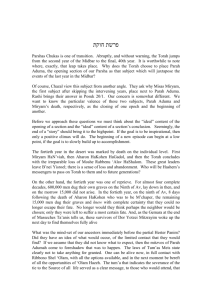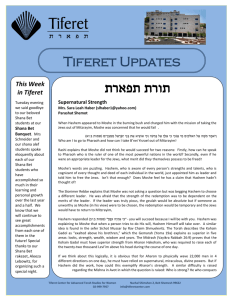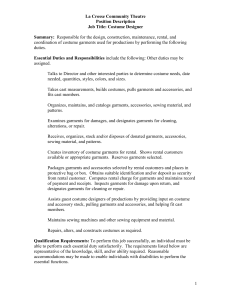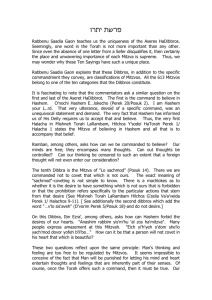tetzaveh.doc
advertisement
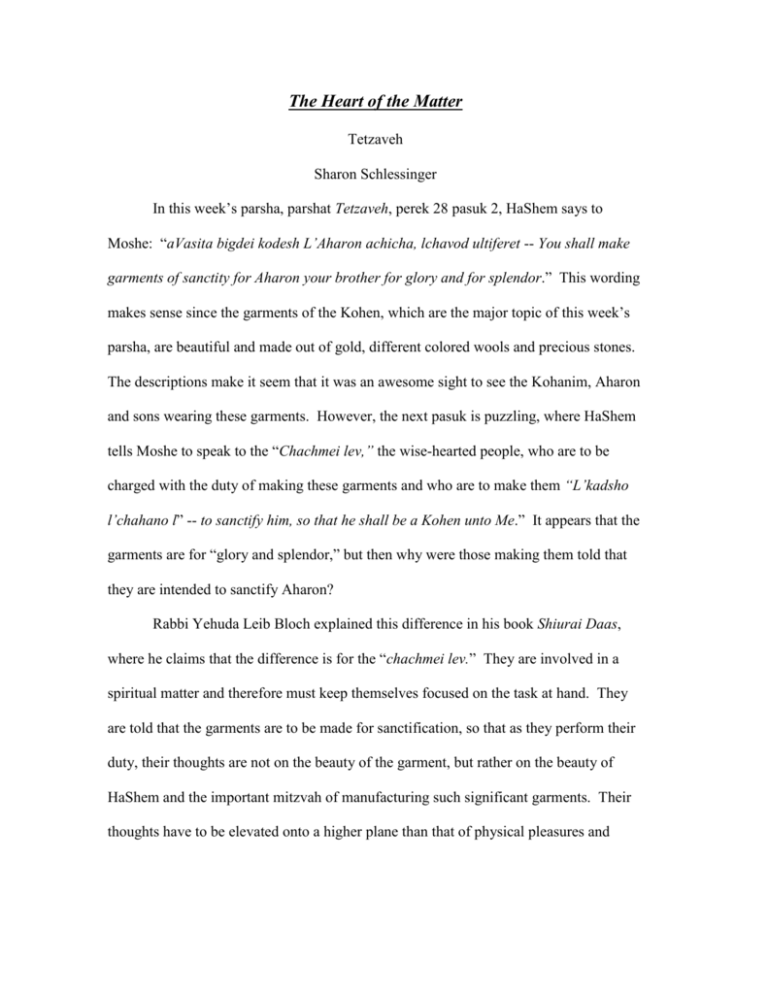
The Heart of the Matter Tetzaveh Sharon Schlessinger In this week’s parsha, parshat Tetzaveh, perek 28 pasuk 2, HaShem says to Moshe: “aVasita bigdei kodesh L’Aharon achicha, lchavod ultiferet -- You shall make garments of sanctity for Aharon your brother for glory and for splendor.” This wording makes sense since the garments of the Kohen, which are the major topic of this week’s parsha, are beautiful and made out of gold, different colored wools and precious stones. The descriptions make it seem that it was an awesome sight to see the Kohanim, Aharon and sons wearing these garments. However, the next pasuk is puzzling, where HaShem tells Moshe to speak to the “Chachmei lev,” the wise-hearted people, who are to be charged with the duty of making these garments and who are to make them “L’kadsho l’chahano l” -- to sanctify him, so that he shall be a Kohen unto Me.” It appears that the garments are for “glory and splendor,” but then why were those making them told that they are intended to sanctify Aharon? Rabbi Yehuda Leib Bloch explained this difference in his book Shiurai Daas, where he claims that the difference is for the “chachmei lev.” They are involved in a spiritual matter and therefore must keep themselves focused on the task at hand. They are told that the garments are to be made for sanctification, so that as they perform their duty, their thoughts are not on the beauty of the garment, but rather on the beauty of HaShem and the important mitzvah of manufacturing such significant garments. Their thoughts have to be elevated onto a higher plane than that of physical pleasures and beauty. In order for anyone to carry out spiritual matters, their focus should be on the sanctity of the task given to them, and not on the actual beauty of the objects. If this is the case, then why make the garments beautiful at all? HaShem does not care about external beauty, and in fact, it appears to be a problem for those who have to manufacture the garments? Rabbi Bloch explains that it is because HaShem understood human nature: Humans naturally associate things of great importance with things that are also externally beautiful. Meanwhile, things that are plain and simple are not associated with any type of importance, spiritually or otherwise. The B’gadim’s descriptions are infused with profound spiritual and mystical symbolism. If the B’gadim are to inspire Bnei Yisroel, to bring about thoughts of HaShem by all who see them, then it is necessary for them to be beautiful. Therefore HaShem says that the garments are to be made “lchavod ultiferet” as well. We can learn from this that it is not the external that is important, but that we should be like the “chachmei lev” and focus on the higher reason for the beauty, HaShem, and His Torah and Mitzvot.
